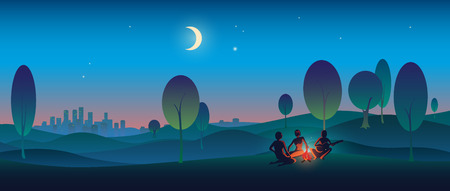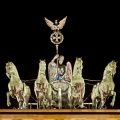1. Introduction: The British Isles Under the Stars
Throughout history, the British Isles have been a land deeply attuned to the rhythms of the heavens. From misty stone circles on windswept moors to age-old fire festivals that blaze under the night sky, astrology and the celestial cycle have woven themselves into the fabric of ancient British life. This article invites you to explore how our ancestors looked upwards for meaning, using the stars as both compass and calendar. Across England, Scotland, Wales, and Ireland, each season brought not only a change in landscape but also a shift in spiritual focus, marked by festivals that honoured the turning of the year. By tracing these connections, we can gently uncover how astrological wisdom and seasonal celebration shaped community traditions—reminding us that even today, beneath familiar skies, the old magic lingers on.
2. The Zodiac Wheel and the Turning Year
The tapestry of British life has always been woven with threads of nature’s rhythm, and nowhere is this more evident than in the dance between the zodiac wheel and the turning year. As the Earth moves through its annual journey around the Sun, each astrological sign unfurls in harmony with the changing landscapes of Britain—from the awakening snowdrops of early spring to the deep golds of autumn bracken. Locally, these cosmic shifts were once deeply felt and often celebrated through ancient festivals, marking not just the passage of time but also a spiritual connection to the land.
A gentle glance at the calendar reveals how certain zodiac signs correspond closely with traditional British festivities. For instance, Beltane, which welcomes May’s blossoming, aligns beautifully with Taurus—an earth sign known for its sensual appreciation of growth and abundance. Similarly, Samhain’s veiled mysteries echo Scorpio’s transformative depths as autumn yields to winter. This cyclical interplay offers not only a poetic lens on seasonal change but also an opportunity to connect with our ancestors’ wisdom and local folklore.
| Astrological Sign | British Season | Ancient Festival | Local Lore |
|---|---|---|---|
| Aries | Early Spring | Spring Equinox (Ostara) | New beginnings; lambing season |
| Taurus | Mid-Spring | Beltane | Maypole dancing; celebrating fertility |
| Cancer | Midsummer | Summer Solstice (Litha) | Bonfires on hilltops; gathering herbs |
| Scorpio | Late Autumn | Samhain | Ancestral honouring; thinning of the veil |
This synergy between sky and soil has long encouraged a tender mindfulness within communities—reminding us that we, too, are part of a greater pattern. Through observing both the zodiac and the seasonal cycle, we can attune ourselves to nature’s subtle cues, finding meaning and comfort in local traditions passed down through generations.

3. Stone Circles, Celestial Alignments, and Sacred Gatherings
When we wander across the windswept moors and verdant fields of Britain, it’s impossible not to be drawn to the enigmatic presence of ancient stone circles like Stonehenge and Avebury. These monumental structures are more than mere relics; they are celestial observatories, echoing with the wisdom and wonder of our ancestors. The careful placement of these stones reveals a profound understanding of the heavens above—a synchrony between earthbound ritual and the cosmic ballet unfolding overhead.
The alignments of these ancient monuments are no coincidence. Stonehenge, for instance, is famously oriented to frame the sunrise on the summer solstice, a moment when light pierces through centuries of stone to ignite hope for renewed life. Avebury, with its vast encircling stones, similarly holds secrets in its geometry that speak to lunar cycles and equinoxes. Our forebears gathered at these sites, not only to witness celestial events but also to mark pivotal points in the agricultural calendar—times when sowing or reaping would bring harmony with nature’s rhythms.
Within these sacred spaces, festivals were woven into the very fabric of life. The gathering of community beneath midsummer’s dawn or winter’s longest night was as much about forging social bonds as it was about honouring the stars. Here, astrology finds its roots in British soil: ancient Britons read the sky as an ever-changing storybook, seeking guidance from planetary paths and stellar patterns. Each festival became a touchstone for reflection, gratitude, and anticipation—reminding us that by looking upward together, we find our place within the great turning wheel of seasons.
4. Feasts and Fire: Ancient British Festivals Through an Astrological Lens
As the wheel of the year turns, ancient British festivals such as Beltane, Samhain, and Lammas have long illuminated the landscape with their fiery celebrations and heartfelt traditions. These festivals are not merely markers of time; they are vibrant expressions of a deep connection between earth, stars, and human spirit. Each festival aligns with significant points in both the agricultural calendar and celestial events, weaving together planetary movements and local beliefs in a tapestry that is uniquely British.
Beltane: The Blossoming Under Venus
Beltane, celebrated around 1st May, heralds the height of spring. Traditionally, it’s a festival of fire and fertility, when bonfires blaze across the land to symbolise purification and protection. Astrologically, Beltane resonates with the energy of Taurus—ruled by Venus—which brings themes of sensuality, abundance, and blossoming love. The longer days and warmer weather echo Venusian qualities: beauty, pleasure, and harmony in nature. Local customs such as maypole dancing mirror the intertwining energies of earth and sky.
Samhain: Ancestral Gates Opened by Scorpio
Marking the end of harvest on 31st October, Samhain stands at the threshold between autumn and winter. This is a time when the veil between worlds is believed to thin, allowing spirits to visit. Astrologically linked to Scorpio—the sign of transformation and mystery—Samhain invites introspection and honouring ancestors. The darkening days align with Scorpionic themes of death, rebirth, and hidden truths. Local traditions such as lighting lanterns or carving turnips (the precursor to pumpkins) reflect a desire to guide souls through darkness.
Lammas: Leo’s Golden Harvest
Falling on 1st August, Lammas (or Lughnasadh) celebrates the first fruits of harvest—a time for gratitude and community gatherings. As Leo’s sun dominates the sky, this festival radiates with warmth, generosity, and creativity. The act of baking bread from newly harvested grain symbolises both sustenance and solar energy. Community games and fairs held during Lammas echo Leo’s playful spirit while acknowledging the importance of working together under the watchful gaze of the summer sun.
Astrological Connections Table
| Festival | Date | Main Astrological Sign | Celestial Themes |
|---|---|---|---|
| Beltane | 1st May | Taurus (Venus) | Fertility, Love, Sensuality |
| Samhain | 31st October | Scorpio (Pluto/Mars) | Transformation, Ancestry, Mystery |
| Lammas | 1st August | Leo (Sun) | Harvest, Creativity, Community |
A Living Tradition in Modern Times
Though modern Britain has changed dramatically since these festivals first began, echoes of their astrological origins remain woven into local customs—from Morris dancing at dawn on Beltane to communal feasts at Lammas. For those who look up at the night sky or feel the turning seasons in their bones, these ancient feasts offer more than nostalgia; they are living rituals that ground us in both celestial rhythm and earthly belonging.
5. Sign by Sign: Astrological Symbolism in Festival Traditions
Tenderly examining the ancient British landscape, we discover that each zodiac sign and its ruling planet cast their own subtle glow across the cycle of festivals and rural rituals. The gentle unfolding of Aries energy in early spring aligns with the firelit vigour of Beltane, where new beginnings burst forth in wildflower meadows and village greens alike. As Taurus settles over the countryside, the earth’s stability is celebrated in May Day garlands and the grounding rituals that bless crops and hearth.
Gemini’s playful winds arrive as summer approaches, mirrored in lively Morris dances and the shared stories beneath blossoming hawthorns—fitting for Mercury’s sign of communication. The nurturing embrace of Cancer then softens midsummer solstice gatherings, evoking lunar magic as communities reflect on home, kinship, and the ancient waters of sacred wells.
Leo’s regal warmth ignites Lammas, the first harvest, as bonfires blaze on hilltops—a tribute to solar power and communal pride. Virgo follows with Michaelmas traditions, where care for detail is honoured through gleaning feasts and acts of service, echoing Mercury’s thoughtful wisdom in the turning fields.
Libra arrives with autumn equinox balance: woven into apple-bobbing games and harmonious gatherings beneath copper leaves, Venus inspires a gentleness in giving thanks. Scorpio’s depth emerges as nights draw in, entwined with Samhain’s mystery—when veils thin and ancestral spirits are remembered by candlelight, Pluto’s transformative presence quietly felt.
Sagittarius opens winter pathways during Yuletide revels, where tales of far-flung lands and jovial fireside songs embody Jupiter’s expansive spirit. Capricorn steadies midwinter with Saturnian resolve: wassailing orchards and solemn Twelfth Night observances mirror the enduring strength needed to weather darker days.
Aquarius stirs innovation as Imbolc candles flicker against February frost—Uranus’ spark invites hope for new visions. Finally, Pisces dreams through late winter’s mists; water blessings at holy springs and Lenten reflections echo Neptune’s compassion before the wheel turns anew. Each festival thus becomes a tender conversation between starry influence and earthly tradition—a dance that connects us gently to both cosmos and countryside year after year.
6. Lasting Legacy: Modern Echoes of Ancient Wisdom
As we journey through the turning wheel of the year, it becomes evident that the ancient British festivals and their astrological underpinnings still cast a gentle light upon our modern lives. The echoes of these starry traditions resonate in today’s UK celebrations—from the midsummer gatherings at Stonehenge to the quiet reflection of Winter Solstice candlelight. Many spiritual communities and everyday folk alike feel the pull of celestial rhythms, seeking meaning in the same cycles that guided our ancestors.
The revival of interest in astrology, mindfulness, and nature-based festivals is more than a trend; it is a soulful return to wisdom that once shaped the very heart of British culture. Today, as families gather for May Day dances or Samhain bonfires, there is an unspoken reverence for the mysteries overhead. Even urban dwellers pause to notice the full moon rising over city rooftops, perhaps unknowingly echoing ancient rites.
This modern embrace invites us to wonder: what might we rediscover if we listened to the old stories written in the stars? By connecting with these cycles—honouring both science and spirit—we nurture a sense of belonging, resilience, and awe. The legacy of astrology and seasonal celebration offers not just nostalgia, but an invitation: to reconnect with nature’s wisdom and find new meaning beneath familiar skies. Through this gentle blending of past and present, each season becomes a reminder that we are part of something vast and beautiful, ever-turning and ever-renewed.


